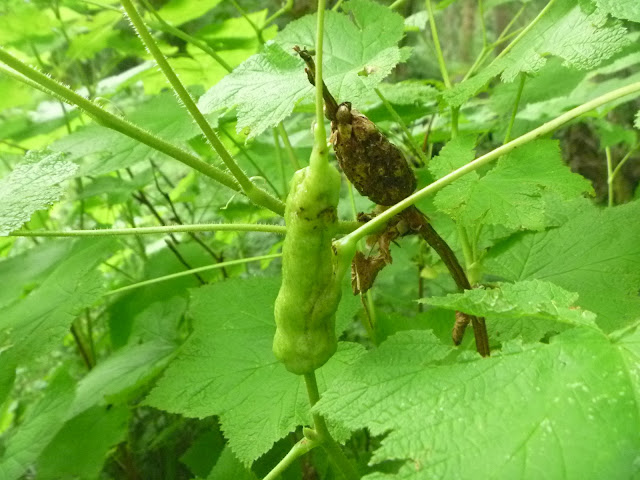 |
| These thimbleberries are not yet ripe. |
Thimbleberry has wide, velvety leaves which protect wildlife from the elements. Dense thickets of thimbleberry form good nesting and foraging habitat for many small birds. In summer, during the hottest part of the day, I would want to crawl into a cool stand of thimbleberry.
Elk (Cervus canadensis) browse the leaves of thimbleberry. Due to the softness and size, hikers find find the leaves very handy as 'nature's toilet paper'.
 |
| A wasp gall forms on the stem of this thimbleberry. |
Short-lived, parasitic wasps (Diastrophus kincaidii) burrow into thimbleberry stems and lay a multitude (30-50) of eggs. A gall will appear on the stem (above) three to four weeks later when the larvae continue feeding, stimulating the formation of excessive parenchyma tissue. The larvae within the gall are easy targets, trapped within the thick tissue, and most of the time they fall prey to other parasites.
I wonder if the parasitic wasps are as delicious as the berries...

